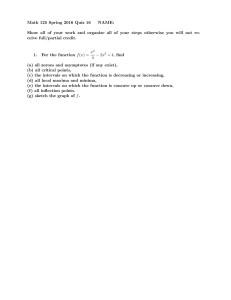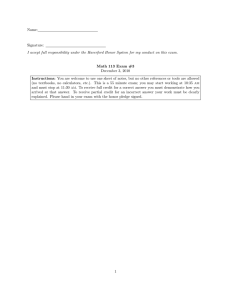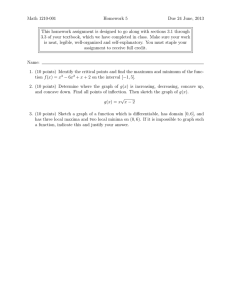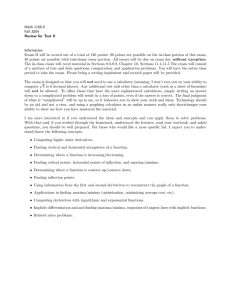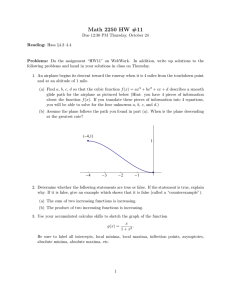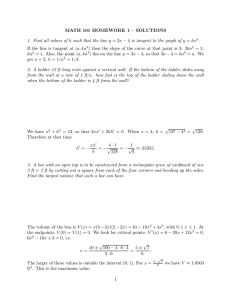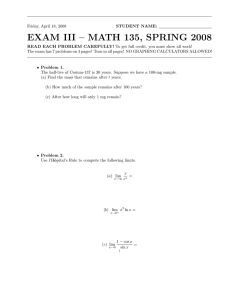PRACTICE PROBLEMS FOR THE FINAL Problem 1. Suppose you
advertisement
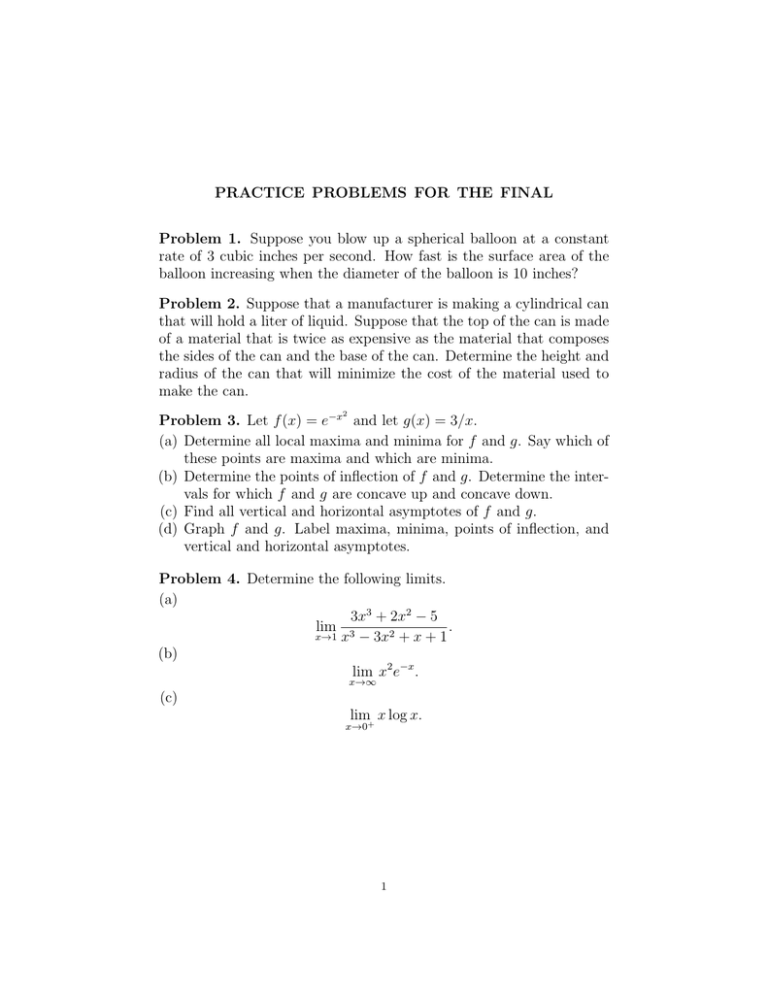
PRACTICE PROBLEMS FOR THE FINAL Problem 1. Suppose you blow up a spherical balloon at a constant rate of 3 cubic inches per second. How fast is the surface area of the balloon increasing when the diameter of the balloon is 10 inches? Problem 2. Suppose that a manufacturer is making a cylindrical can that will hold a liter of liquid. Suppose that the top of the can is made of a material that is twice as expensive as the material that composes the sides of the can and the base of the can. Determine the height and radius of the can that will minimize the cost of the material used to make the can. 2 Problem 3. Let f (x) = e−x and let g(x) = 3/x. (a) Determine all local maxima and minima for f and g. Say which of these points are maxima and which are minima. (b) Determine the points of inflection of f and g. Determine the intervals for which f and g are concave up and concave down. (c) Find all vertical and horizontal asymptotes of f and g. (d) Graph f and g. Label maxima, minima, points of inflection, and vertical and horizontal asymptotes. Problem 4. Determine the following limits. (a) 3x3 + 2x2 − 5 lim 3 . x→1 x − 3x2 + x + 1 (b) lim x2 e−x . x→∞ (c) lim x log x. x→0+ 1 2 PRACTICE PROBLEMS FOR THE FINAL Problem 5. Let f (x) = 10x3 − x2 + 4x − 1. (a) The function f has at least one zero in [0, .5]. Determine the first digit after the decimal point for one of the zeroes (Hint: Plug in 0,.1,.2, etc and use the Intermediate Value Theorem). (b) Find the integer n with 0 ≤ n ≤ 5 for which |f (.n)| is smallest. Use a linear approximation to the function f at .n to approximate the zero of the function. 2 Problem 6. Find the tangent line to ex − ey = 0 at the point (1, 1). Problem 7. Compute the derivatives of the following functions. 2 (a) f (t) = te−t 2x (b) y = sin x (c) g(x) = arctan(x2 + 1) (d) y = (1 + x)1/x Problem 8. Below is the graph of f 0 . Where does f have local maxima, local minima, and points of inflection? Where is the graph of f concave up? Concave down? When is f increasing? Decreasing? 4 3 2 1 -6 -5 -4 -3 -2 -1 1 2 3 4 5 -1 -2 -3 Problem 9. Repeat question 8, except this time assume that the graph given is the graph of f . 6 PRACTICE PROBLEMS FOR THE FINAL Problem 9. Find all asymptotes of the function 2x + 3 f (x) = √ . x2 − 1 Problem 10. Let f (x) = ax+b where a, b, c, and d are constants. cx+d (a) Find f −1 (x) in terms of a, b, c, and d. (b) Compute the derivatives of f and of f −1 . 1 in this case, where g = f −1 . (c) Verify that g 0 (x) = f 0 (g(x)) 3
